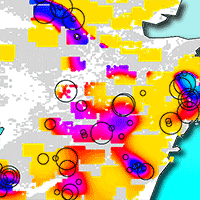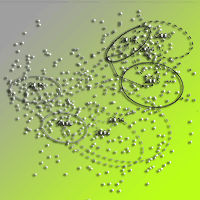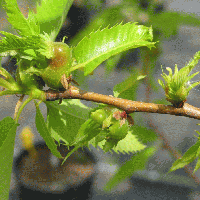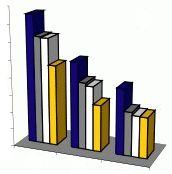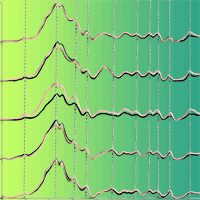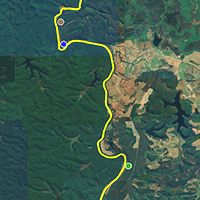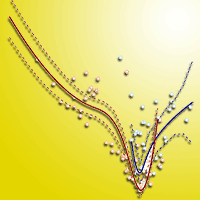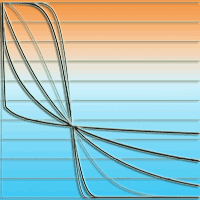
Environmental factors affecting formation of lammas shoots in young stands of Norway spruce (Picea abies Karst.) in Latvia
Juris Katrevics, Una Neimane, Baiba Dzerina, Mara Kitenberga, Janis Jansons, Aris Jansons
iForest - Biogeosciences and Forestry, Volume 11, Issue 6, Pages 809-815 (2018)
doi: https://doi.org/10.3832/ifor2539-011
Published: Dec 14, 2018 - Copyright © 2018 SISEF
Research Articles
Abstract
Norway spruce is a relatively fast-growing tree species that is primarily regenerated by planting, which requires significant investments. The formation of lammas shoots (i.e., second flushing in late summer) have been proven to affect the quality and productivity of Norway spruce stands. The aim of our study was to assess the proportion of trees with lammas shoots in young stands of Norway spruce and to investigate the factors affecting their formation. Data have been collected at the end of 2011 in 102 three- to seven-year-old Norway spruce plantations randomly selected across different forest types in the central part of Latvia, and a subset of 21 stands were inventoried again at the end of 2012. In each stand, 20 sample plots were systematically established where trees with and without lammas shoots were counted and micro-environmental factors (moisture, competition, and browsing) were assessed on a three-grade scale. On average, the proportion of trees with lammas shoots was 6.5%. There was no significant effect of the stand age (from 3 to 7 years) on the proportion of trees with lammas shoots nor was there any age-related trend. The effect of forest type on the presence of lammas shoots was not significant. Micro-environmental factors had an important influence on the proportion of trees with lammas shoots. The proportion of lammas shoots in stands with no competition was significantly higher (14.5%) compared to stands with medium and high competition (6.0% and 2.2%, respectively). Similarly, a significantly higher proportion of trees with lammas shoots (11.7%) was observed in sites with normal moisture regime than in sites with slight or notable excess moisture, reaching 4.8% and 1.7%, respectively. Although the influence of browsing damage was not statistically significant, its trend was similar to that observed for competition and moisture regime. Overall, the proportion of trees with lammas shoots was highest in stands showing the most suitable micro-environmental conditions for Norway spruce.
Keywords
Second Flushing, Vegetation Competition, Tending, Moisture Excess, Browsing Damage
Authors’ Info
Authors’ address
Una Neimane
Baiba Dzerina
Mara Kitenberga
Janis Jansons
Aris Jansons
Latvian State Forest Research Institute “Silava”, Rigas Street 111, Salaspils, LV-2169 (Latvia)
Corresponding author
Paper Info
Citation
Katrevics J, Neimane U, Dzerina B, Kitenberga M, Jansons J, Jansons A (2018). Environmental factors affecting formation of lammas shoots in young stands of Norway spruce (Picea abies Karst.) in Latvia. iForest 11: 809-815. - doi: 10.3832/ifor2539-011
Academic Editor
Angelo Nolè
Paper history
Received: Jun 27, 2017
Accepted: Oct 08, 2018
First online: Dec 14, 2018
Publication Date: Dec 31, 2018
Publication Time: 2.23 months
Copyright Information
© SISEF - The Italian Society of Silviculture and Forest Ecology 2018
Open Access
This article is distributed under the terms of the Creative Commons Attribution-Non Commercial 4.0 International (https://creativecommons.org/licenses/by-nc/4.0/), which permits unrestricted use, distribution, and reproduction in any medium, provided you give appropriate credit to the original author(s) and the source, provide a link to the Creative Commons license, and indicate if changes were made.
Web Metrics
Breakdown by View Type
Article Usage
Total Article Views: 43409
(from publication date up to now)
Breakdown by View Type
HTML Page Views: 36087
Abstract Page Views: 3018
PDF Downloads: 3406
Citation/Reference Downloads: 4
XML Downloads: 894
Web Metrics
Days since publication: 2558
Overall contacts: 43409
Avg. contacts per week: 118.79
Citation Metrics
Article Citations
Article citations are based on data periodically collected from the Clarivate Web of Science web site
(last update: Mar 2025)
Total number of cites (since 2018): 7
Average cites per year: 0.88
Publication Metrics
by Dimensions ©
Articles citing this article
List of the papers citing this article based on CrossRef Cited-by.
References
Latvijas PSR meža tipologijas pamati [Fundamentals of forest classification in Latvia SSR]. Silava, Riga, Latvia, pp. 24. [in Latvian]
Gscholar
The structure and life of forest trees. John Wiley and Sons, New York, USA, pp. 436.
Gscholar
Summer shoots cause permanent damage to red pine. Journal of Forestry 54: 271-271.
Gscholar
Phenology of natural Swedish populations of Picea abies as compared with introduced seed sources. Forest Genetics 5: 211-220.
Gscholar
Current growth differences of Norway spruce (Picea abies), Scots pine (Pinus sylvestris) and birch (Betula pendula and Betula pubescens) in different regions in Sweden. Scandinavian Journal of Forest Research 23: 307-318.
CrossRef | Gscholar
Picea abies: recent genetic research. Genetic Center, Department of Plant Biology and Forest Genetics, Swedish University of Agricultural Sciences, Uppsala, Sweden, pp. 197.
Gscholar
Genetics and breeding of Norway spruce in Lithuania. UAB Petro ofsetas, Vilnius, Lithuania, pp. 364. [in Lithuanian]
Gscholar
Bedeutung des Austriebes für den Fichtenbau im Pleistozän der DDR [The importance of the August-shoot for the cultivation of spruce in the Pleistocene of the GDR]. Die Sozialistische Forstwirtschaft 7: 204-207. [in German]
Gscholar
Norway Spruce (Picea abies (L.) H. Karst.). In: “Forest Tree Breeding in Europe: Current State-of-the-Art and Perspectives” (Pâques LE ed). Springer, Dordrecht, Heidelberg, New York, London, pp. 123-176.
CrossRef | Gscholar
Differential analysis for next breeding cycle for Norway spruce in Latvia. Baltic Forestry 21 (2): 285-297.
Gscholar
Climate change in Latvia and adaptation to it. University of Latvia Press, Riga, Latvia, pp. 188.
Gscholar
Environmental and genetic effects on lammas growth of Norway spruce. In: Book of Abstracts of the International Scientific Conference “Adaptation of Trees and Stands to Forest Disturbances: Management Considerations”. Silava (Riga, Latvia) 18-21 Oct 2010, pp. 11.
Gscholar
The family and clonal selection for Norway spruce. In: “Genetic studies of conifers in the Latvian SSR” (Kundzins A, Pirags D, Rone V, Fridberga M eds). Zinatne, Riga, Latvia, pp. 34-44.
Gscholar
Egles klonu juvenila augšana un selekcijas strategija [Juvenile growth and breeding strategy of Norway spruce clones]. Jaunakais Mežsaimnieciba 27: 10-16. [in Latvian]
Gscholar
Influence of age on sylleptic and proleptic free growth of Norway spruce seedlings. Silvae Genetica 35 (1): 42-48.
Gscholar

